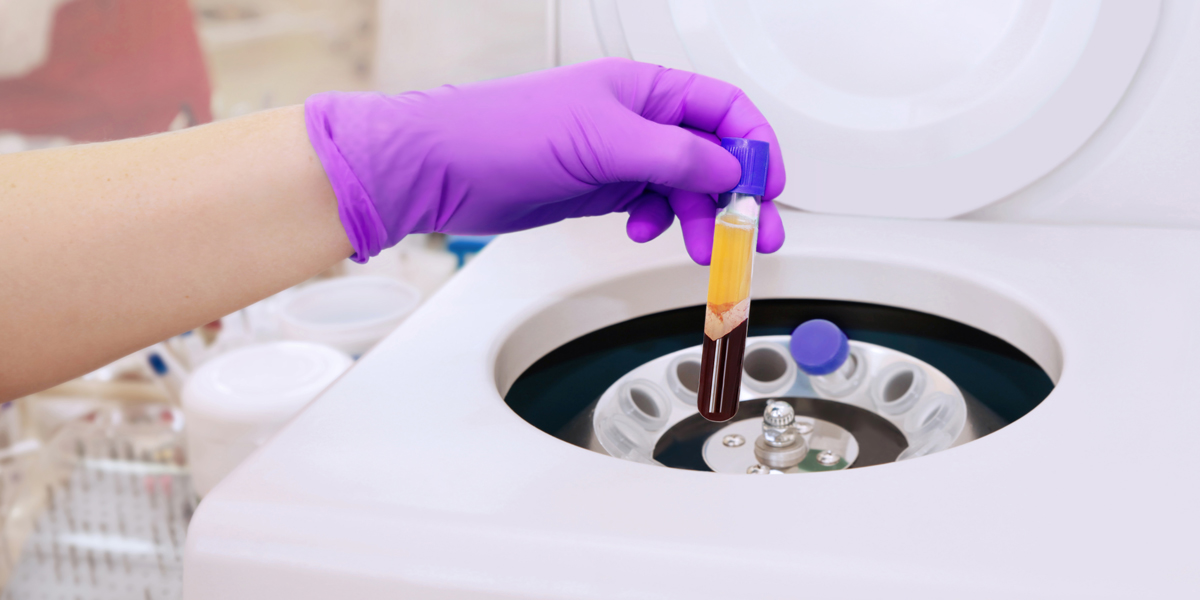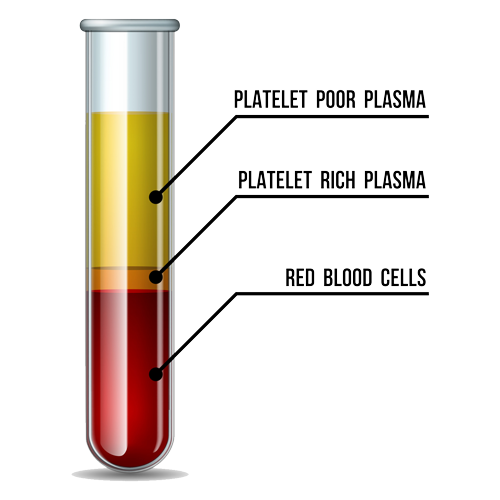
Platelet-rich Plasma (PRP)
 Blood is made up of liquid and solids. The liquid part, called plasma, is made of water, salts and protein. Over half of our blood is plasma. The solid parts are red blood cells, white blood cells and platelets.
Blood is made up of liquid and solids. The liquid part, called plasma, is made of water, salts and protein. Over half of our blood is plasma. The solid parts are red blood cells, white blood cells and platelets.
Every component in our blood serves a variety of important functions, but platelets are the cells that help our blood clot, and they contain special proteins called growth factors. Growth factors play a crucial role in the healing and restoration of the body, bringing extra collagen, oxygen and other important elements to damaged tissue.
Platelet-rich plasma is derived from a small sample of a patient's own blood. A centrifuge processes the blood for about 15 minutes. This process separates the blood components into layers, including a layer of platelet-rich plasma.
Platelet-rich Plasma Therapy
Platelet-rich plasma (PRP) therapy, sometimes called autologous conditioned plasma (ACP) therapy, takes advantage of the blood's natural healing properties to repair wounds, cartilage, tendons, ligaments, muscles or even bone.
PRP therapy is being researched for many uses, but orthopaedic injuries and wound healing are two of the most common applications.
Orthopaedic PRP Injections
Therapeutic PRP injections are used to promote healing of orthopaedic conditions, such as joint injuries of the hip, knee and shoulder, as well as chronic tendon injuries like tennis elbow and Achilles tendinitis. PRP can also be used after an ACL reconstruction or a rotator cuff repair. Most doctors use ultrasound imaging to guide the PRP injection.
PRP Gel for Wounds
Platelet-rich plasma gel is advanced wound therapy for chronic and acute wounds. After the platelets are separated from the other blood components, they are mixed with a medical ‘glue’ to form a gel that is applied topically. PRP gel is a regenerative therapy that is used to accelerate healing of acute and chronic wounds that happen because of surgeries, burns, or infections, as well as pressure ulcers, diabetic and venous ulcers.











